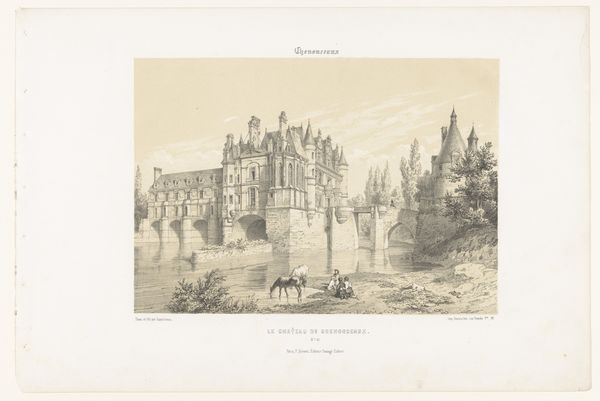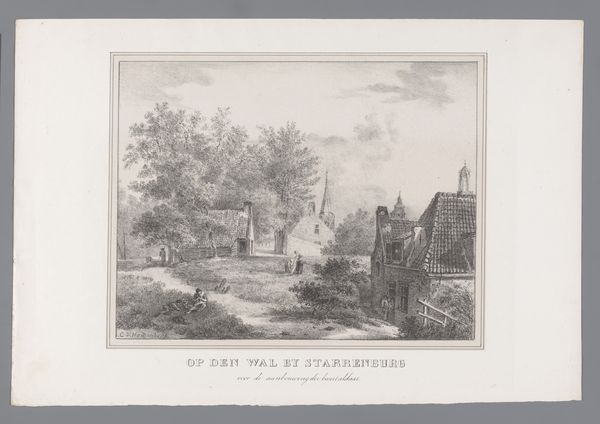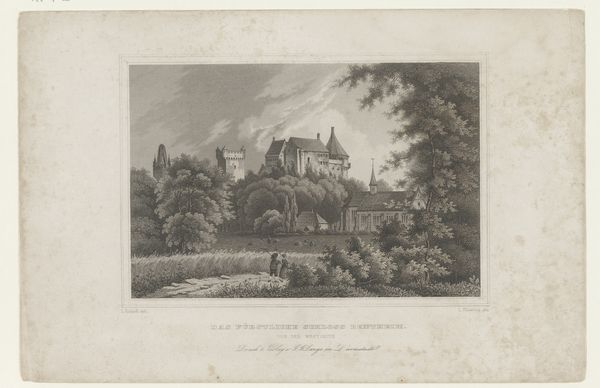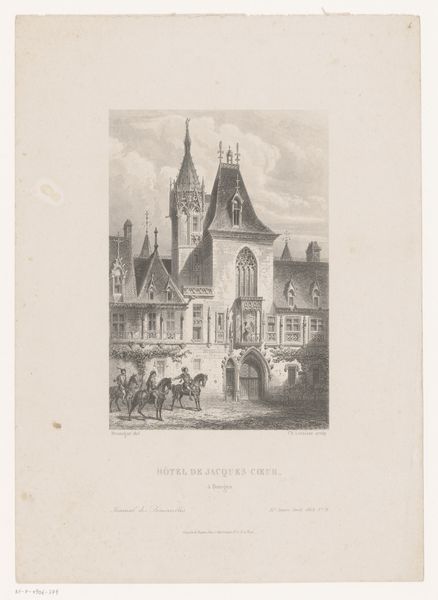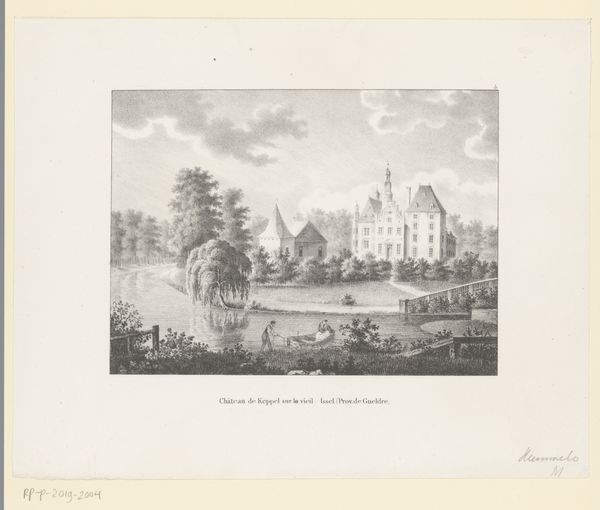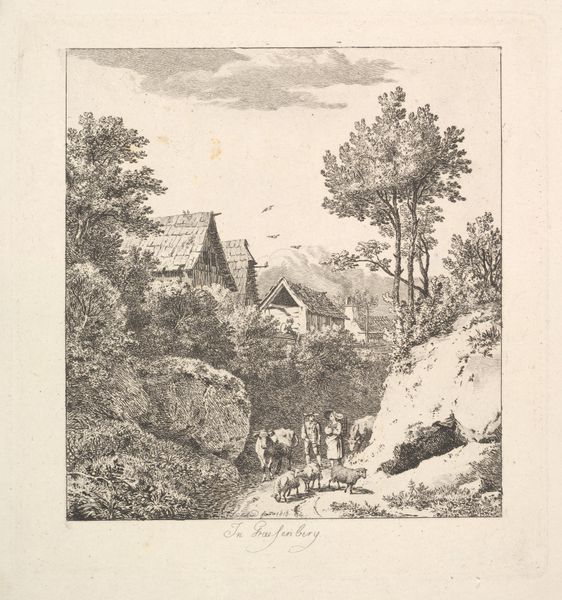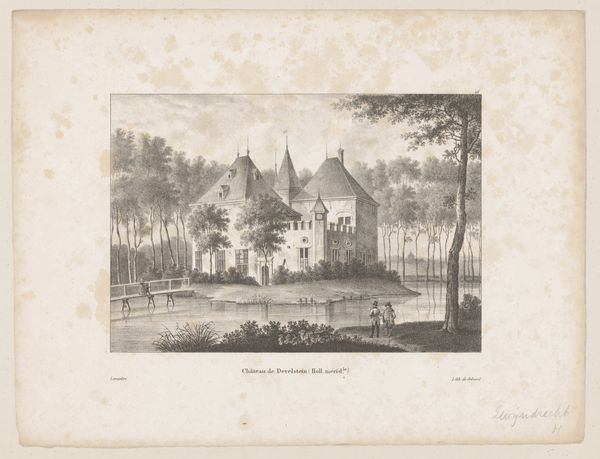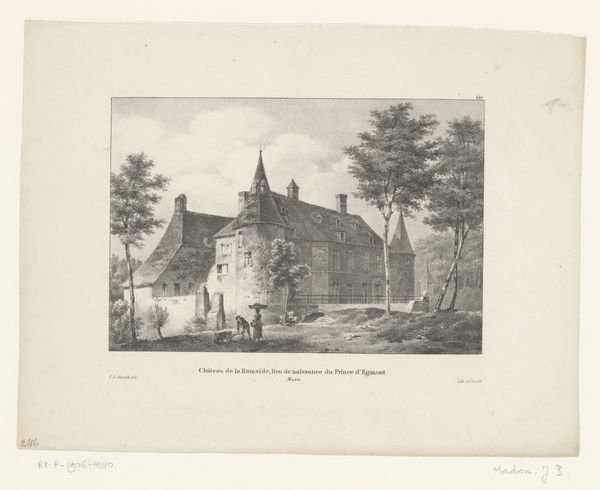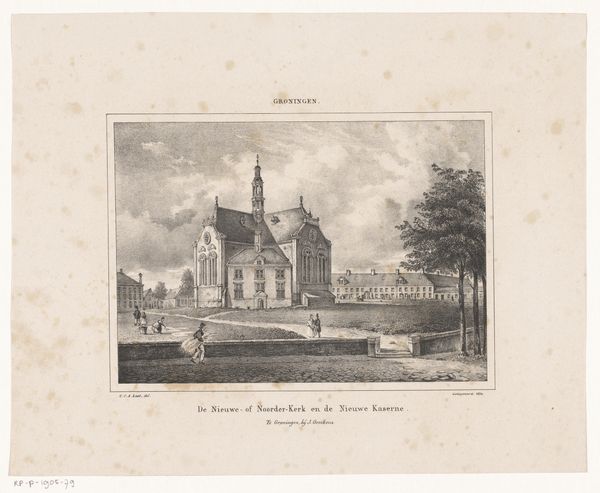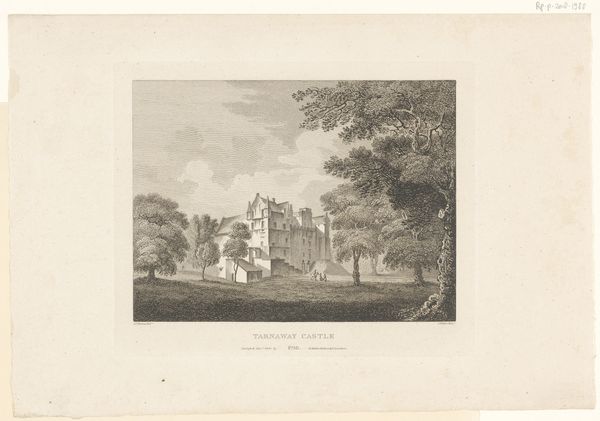
Dimensions: height 291 mm, width 434 mm
Copyright: Rijks Museum: Open Domain
Editor: This is "Zicht op het kasteel van Chaumont-sur-Loire," or "View of the Castle of Chaumont-sur-Loire," by Léon Auguste Asselineau, made between 1853 and 1856. It’s an etching. It has such a wistful, storybook quality. The whole scene, with the castle and the figures in the foreground, feels suspended in time, as if you could dream of it. What’s your impression? Curator: It is a dream, isn’t it? I mean, think of those romantic landscape paintings from the period; the printmakers tried to recreate them, make them widely available, but there is always the cold sting of the needle. Here, though, the artist's eye seems especially drawn to the atmospheric perspective—the way details fade with distance and the interplay of light and shadow on the old stone. Look how the light filters through those meticulously rendered trees! Do you think he romanticizes the Middle Ages here? Editor: Definitely. Those sharply drawn details contribute to that idealization. Is there something intentional about that choice? Curator: I believe so, as the rise of the bourgeoisie encouraged an increase in landscapes from the late 18th Century, artists were inclined to reflect and produce art in line with the political beliefs that supported those landscapes. Also, by focusing on the aesthetic grandeur, maybe Asselineau’s steering clear of commenting on Chaumont’s more troubled history… Editor: It's interesting to think of art of steering the observer down certain paths while discouraging one's curiosity elsewhere. I guess it shows how the setting—be it time, location, medium—affects not just art's appearance, but also its voice. Curator: Precisely, and hopefully we managed to amplify those aspects in our observations.
Comments
No comments
Be the first to comment and join the conversation on the ultimate creative platform.
